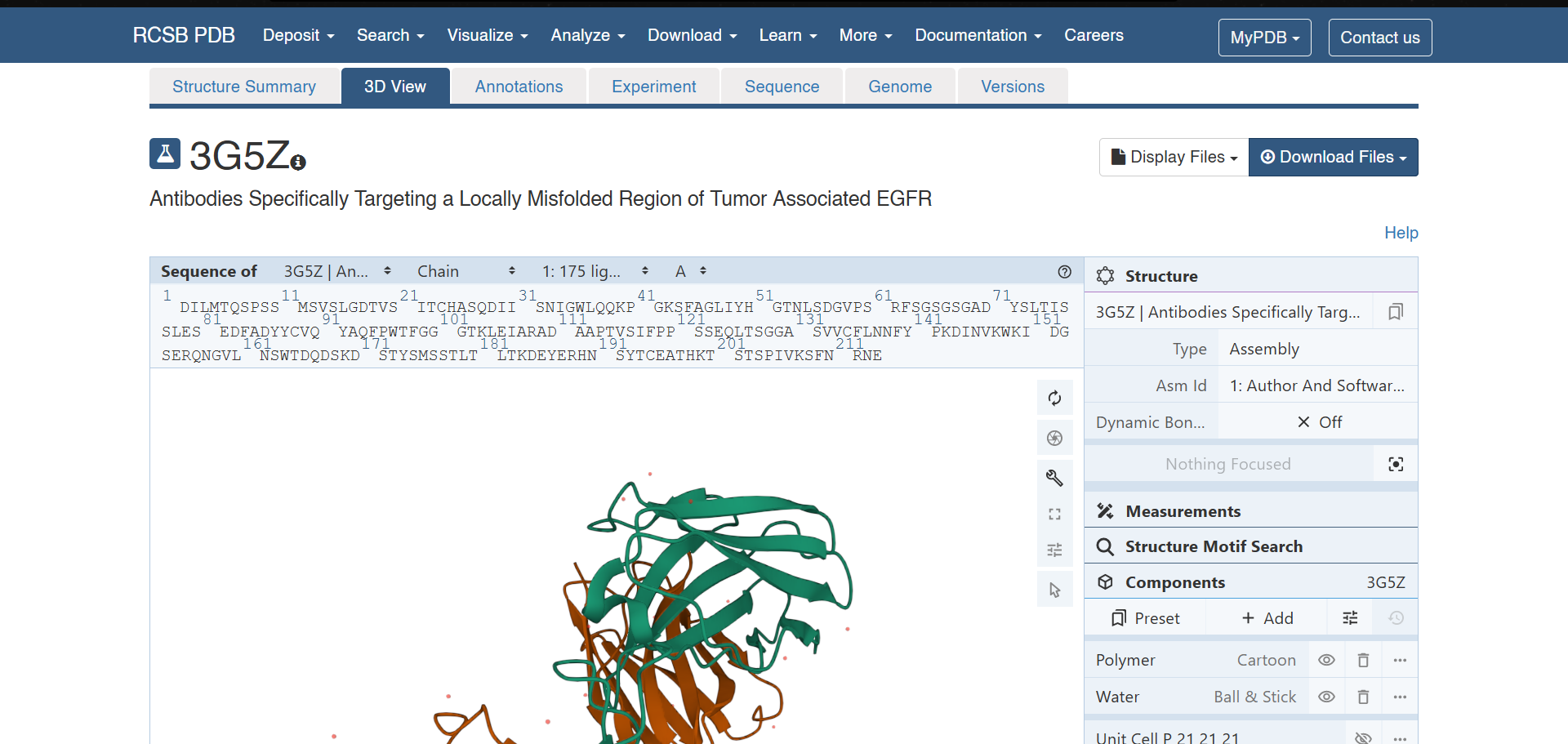


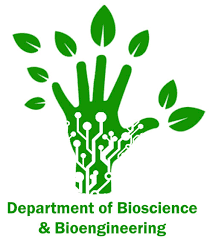
RCSB PDB is the US data center for the global Protein Data Bank (PDB) archive of 3D structure data for large biological molecules (proteins, DNA, and RNA) essential for research and education in fundamental biology, health, energy, and biotechnology. Through an internet information portal and downloadable data archive, PDB provides access to 3D structure data for the molecules of life, found in all organisms on the planet.
RCSB Protein Data Bank (RCSB PDB) enables breakthroughs in science
and education by providing access and tools for exploration,
visualization, and analysis of:
1) Experimentally-determined
3D structures from the Protein Data Bank (PDB) archive
2)Computed Structure Models (CSM) from AlphaFold DB and
ModelArchive
These data can be explored in context of external
annotations providing a structural view of biology.
When you click on the above link, you will come across to the page as shown in the image below
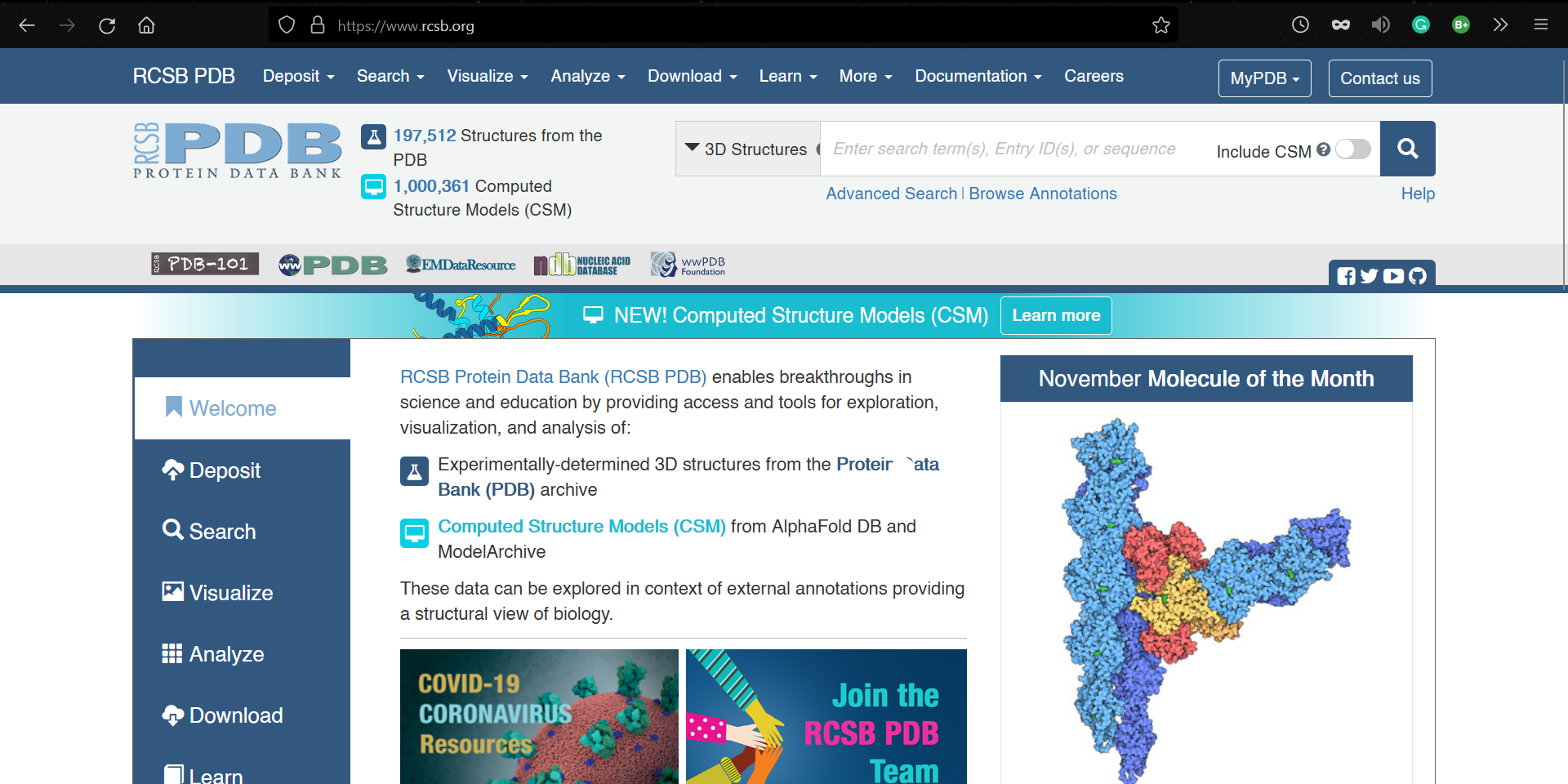
The following image shows us the usage of the search box provided by the PDB, which like every search engine gives us suggestions of the Protein structure of our interest and then we may able to select appropriately. Here we chose EGFR which is The epidermal growth factor receptor (EGFR) belongs to the ERBB family of tyrosine kinase receptors. EGFR signaling cascade is a key regulator in cell proliferation, differentiation, division, survival, and cancer development. In many cancer types, mutations affecting EGFR expression or activity could result in cancer. You may chose your protein of interest.

Now, after clicking on the search icon we come across the image as shown below. In this page we are also given with the option for further refinement which will benefit our experiments also. These refinements can be simply organism from which the gene is extracted, taxonomy, experimental method used, release date etc. we can choose from these
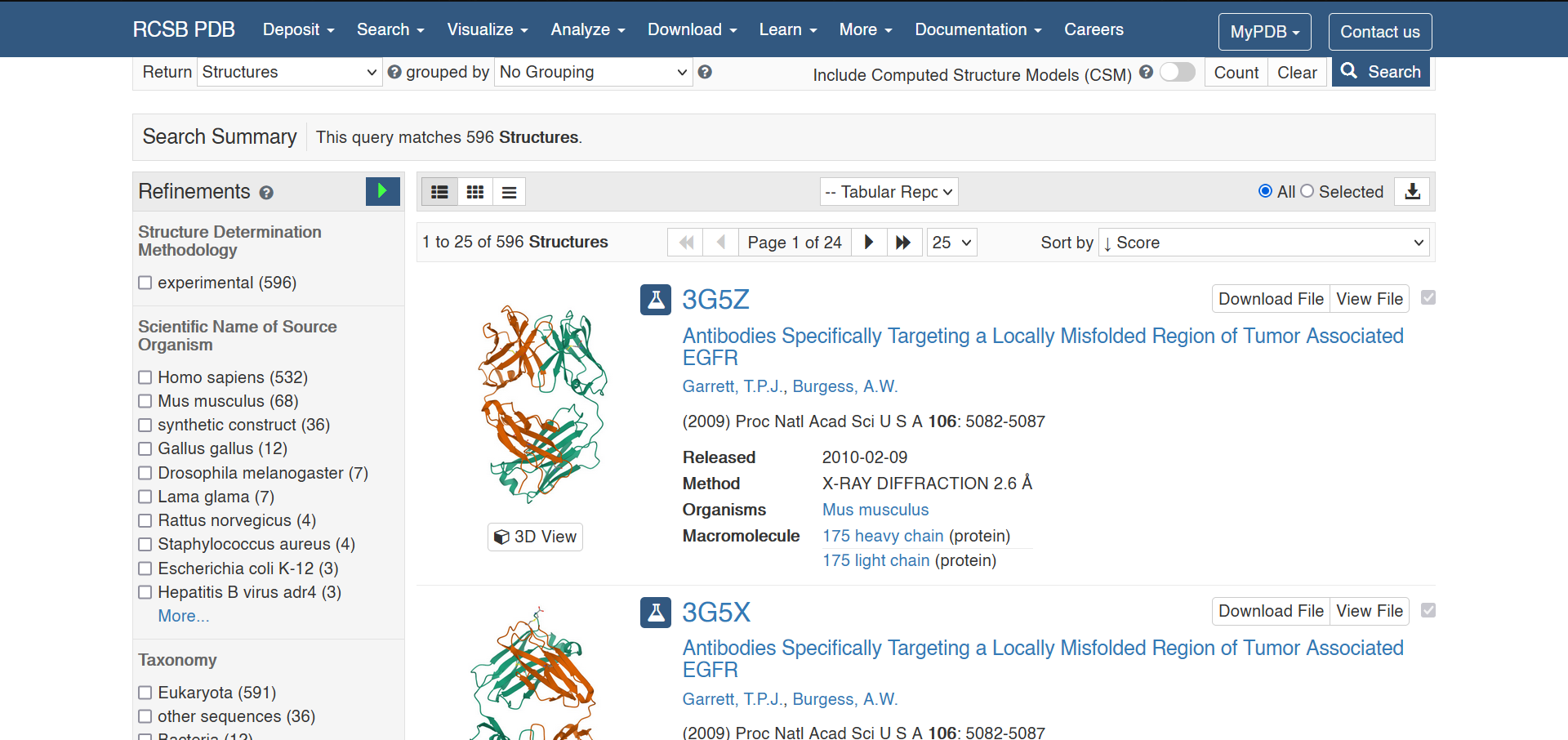
We can simply choose the first result and proceed forward. So, we come across the image as shown below. On top of the page we can see the different availabel options like 3D structure, annotations, experiments, sequence, genome and version. Explore each of these individually as all of these have their own importance. For more information you may refer to the documentation of the PDB website.
Documentation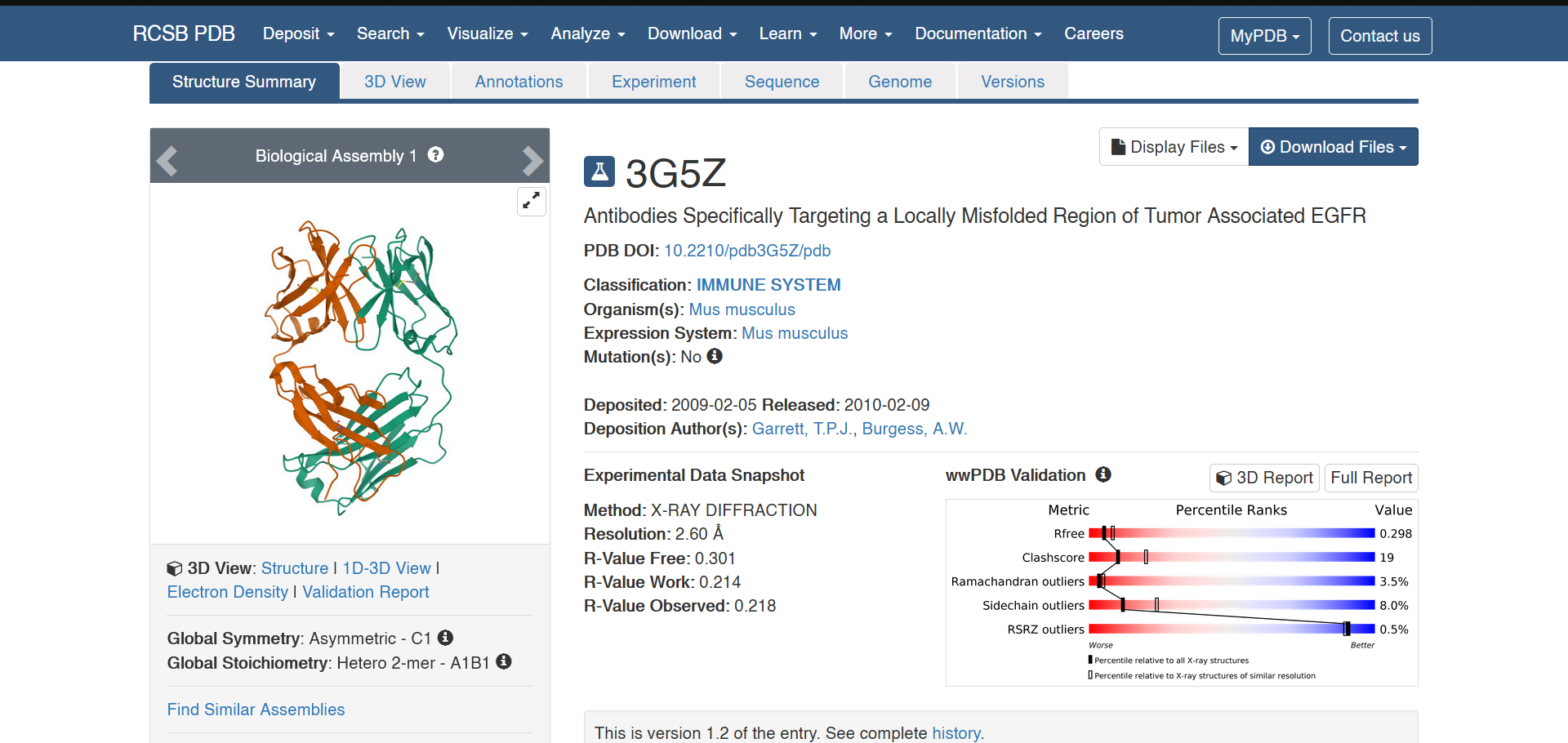
PDB also gives us options to download as per our system requred format, like the famous fasta, PDB format and many more as we can see below. After downloading this sequence we can install desktop supported sotwares like rasmol or pymol to visualize the 3D structures and do some of our own experiments with them. Also, explore about pymol and get familiarize with it.
Pymol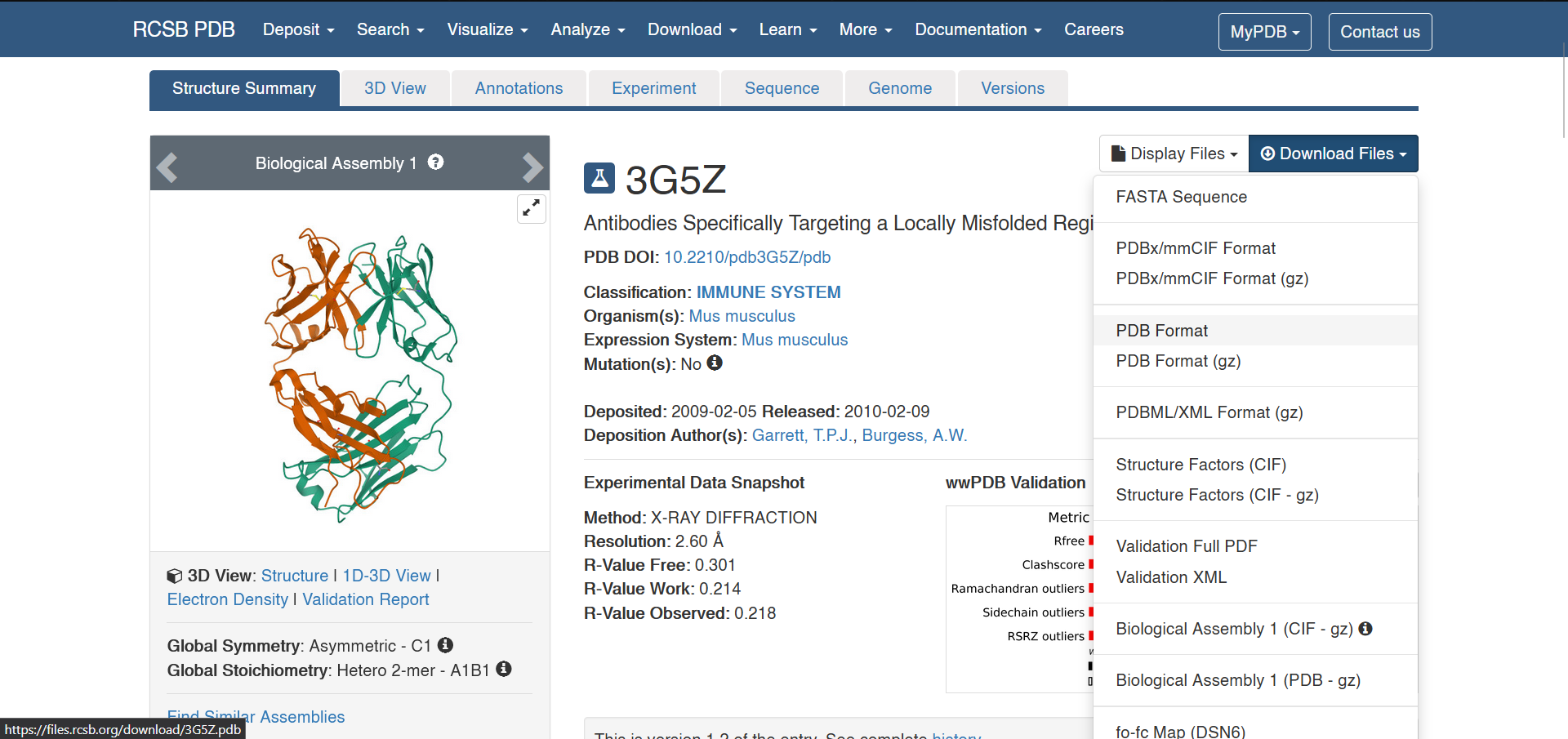
Now, we explore the 3D view simply for the visualization of the selected protein. Here also there are various options for us to learn
3D View